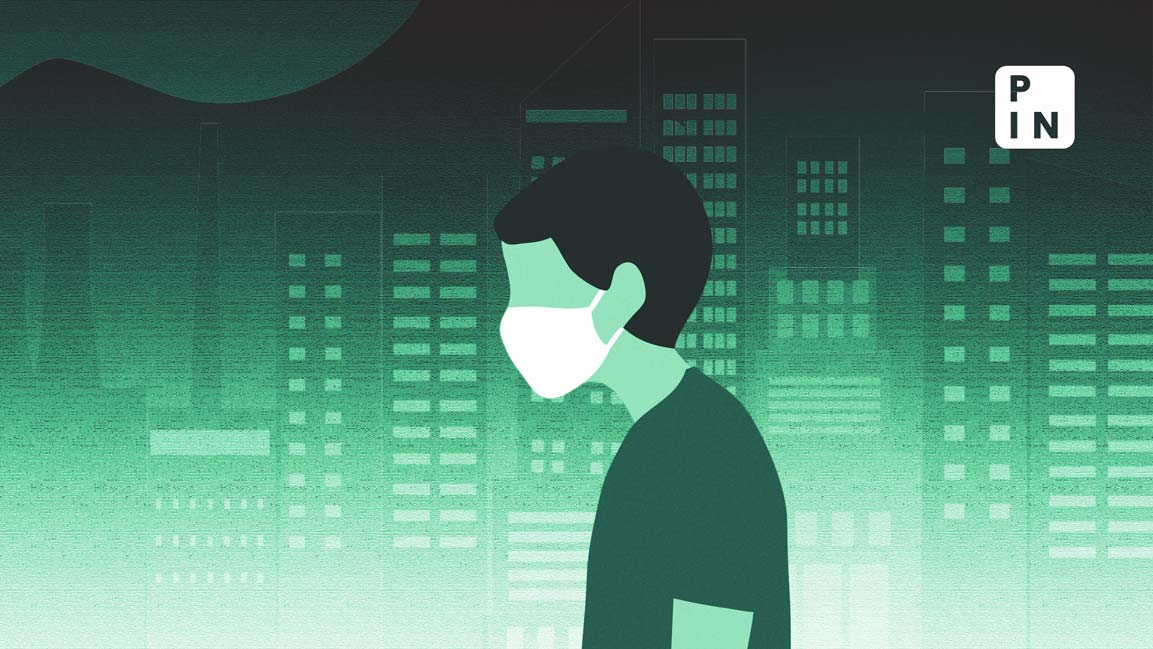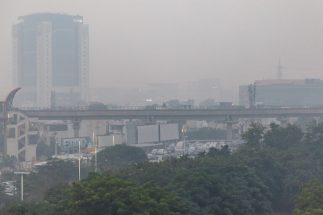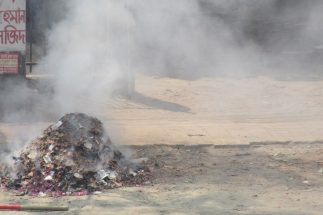- | 1:00 pm
Pollution dips, but fine particulate matter remains top public health threat: AQLI report
India’s particulate pollution slightly dropped in one year, between 2021 and 2022.

The Energy Policy Institute at the University of Chicago (EPIC) has released its annual Air Quality Life Index 2024 report. The report reveals that people in the most polluted regions on Earth are breathing air six times more polluted than the least polluted areas, reducing life expectancy by about 2.7 years in these regions.
There is good news from South Asia: pollution declined by 18% in one year in the region. India’s particulate pollution, too, has declined from 51.3 in 2021 to 41.4 μg/m³ in 2022, which has added one year to the country’s average life expectancy.
In districts home to cities covered by India’s National Clean Air Programme (NCAP), PM2.5 concentrations declined by 19% on average, and in the districts not covered by the programme this stood at 16%.

With the decline in particulate pollution India has added one year to its average life expectancy. Image by Ninara via Flickr (CC BY 2.0).
The report notes that the most significant reductions in particulate pollution in 2022 occurred in the Purulia and Bankura districts of West Bengal and the Dhanbad district of Jharkhand, with pollution levels dropping by over 20 μg/m³ in each of these areas.
Kalpana Balakrishnan, Dean (Research) at the Sri Ramachandra Institute of Higher Education and Research, shared that the increase in life expectancy reflects the cumulative healthy years gained from reducing PM2.5 levels. “It’s not just one number; it accounts for fewer years spent suffering from cardiovascular and respiratory diseases, child growth deficits, and pneumonia — all health outcomes linked to air pollution,” she added.
However, despite the recent improvement in air quality, South Asia continues to be the world’s most polluted region, the AQLI report notes. Of the total life years lost globally to high pollution, South Asia accounts for 45%. Bangladesh, India, Nepal, and Pakistan are among the most polluted countries in the world.
What is causing the decline?
“PM2.5 concentrations in South Asia were 18% lower in 2022 relative to 2021 – with Bangladesh, India, Nepal and Pakistan, all reporting reduced particulate concentrations. However, with just a single year of data, it’s challenging to distinguish between temporary factors, like weather, and permanent ones, like policy implementation, as the causes of this decline,” notes Tanushree Ganguly, Director of the Air Quality Life Index at EPIC in Delhi.
A recent study highlighted the possible contributions of meteorological conditions in the PM2.5 concentrations decline. Another study noted that “unusual large-scale wind” played a significant role in “a mysterious trend reversal in PM2.5 during the winter of 2022–23.”
“Pinpointing the specific causes behind the reduction in PM pollution in the country is complex,” shared Abinaya Sekar, Consulting Research Fellow at the Health Effects Institute. “However, the Government of India has implemented several policy measures over the last decade that likely played a role. In 2019, India launched the NCAP, allocating financial resources and personnel to improve air quality. In 2020, the country adopted Bharat Stage VI vehicle emission standards, which are expected to reduce air pollution over time. Large-scale public initiatives like the Pradhan Mantri Ujjwala Yojana (PMUY) have also expanded access to cleaner cooking fuels.” Sekar also emphasised the significant role that meteorological conditions played in the observed changes in pollution levels.
Polash Mukerjee, independent air quality researcher and former Air Quality Lead for NRDC India, a subsidiary of the global Natural Resources Defense Council, shared that some impacts are also the result of long-term actions, like the transition to BS-VI vehicular emission standards in 2020. “Air pollution interventions tend to show results over 5–10 years, with chronic health impacts emerging over 15–20 years. Right now, the focus should be on creating a stronger structural framework to reach our goals,” he said.
Certain areas have received significant attention, while others, like building local and regional capacity to develop and implement effective interventions, have been overlooked, he explained. “The NCAP has focused heavily on vehicle electrification, fugitive dust, and landfill management. However, there are no silver bullet solutions, and I believe we’re just starting to see that,” he added.
Pollution still remains high
Despite the decline in pollution, the entire Indian population of 1.4 billion still lives in areas where the annual average particulate pollution level exceeds WHO guidelines. Additionally, 42.6% of the population lives in areas where pollution levels surpass India’s national air quality standard of 40 μg/m³.
The AQLI Report does not take into account the dust component in its PM2.5 estimates. “Even when excluding the dust fraction, a significant portion of India’s population still fails to meet the national air quality standard. This is a major concern, indicating a critical need to control emissions. Despite the recent decline, our pollution levels remain far above the WHO target, which underscores the severity of the issue,” shares Ganguly.
The AQLI Report emphasises that since the recent PM2.5 decline could be attributed to above-high rainfall, the decline may be temporary. “This reinforces the need for sustained policy measures aimed at emission control across the South Asian region,” the report warns.
According to Kalpana Balakrishnan, achieving current WHO air quality guidelines, especially the target of 5 μg/m³ for PM2.5, is not feasible in the near term. “However, we are on track to meet the interim target (35 μg/m³) which is very close to our national standard of 40 μg/m³. All sectoral interventions are focused on getting us closer to that goal,” she shared.
Given that the decline in PM2.5 concentrations is regionwide, policy measures in the region need to be examined. “India has its own standard, but when we look at the broader South Asian region, there is a patchwork of standards. India’s standard is 40 μg/m³, Pakistan’s annual PM2.5 standard is 15 μg/ m³, Bangladesh’s limit is 35 μg/m³, and Nepal lacks a standard altogether. It’s crucial for us to work towards aligning these standards across the region,” Ganguly added.

Despite the reduction in pollution levels, all 1.4 billion people in India continue to live in areas where the annual average particulate matter surpasses WHO recommended limits. Image by Sadman1100 via Wikimedia Commons (CC BY-SA 4.0).
Polash Mukerjee emphasised that India is currently only monitoring PM2.5 and PM10 concentrations. “We need to go further and assess actual health outcomes, like rates of chronic obstructive pulmonary disorder, asthma, and respiratory issues — known acute impacts of pollution. This data is mostly anecdotal; the government should be actively measuring these health trends,” he added.
A recent study found that around 33,000 deaths annually in India could be attributed to air quality levels exceeding WHO PM2.5 guidelines.
Balakrishnan believes that the NCAP already outlines the steps needed to meet interim WHO standards. “Among these, reducing household air pollution by switching from biomass to clean fuels like LPG on a national scale is the lowest-hanging fruit,” she said.
Ganguly says that the NCAP serves as the overarching framework for air quality management. She says, “In the coming months, it’s crucial to ensure it is implemented as designed. Pollution levels cannot be reduced without implementing forceful policies and making deliberate efforts to enforce standards.” Fortunately, she added, there are already some promising developments. “The industrial emission trading scheme is currently being implemented in Gujarat. The Gujarat State Pollution Control Board is collaborating with researchers from EPIC and JPAL on a pioneering initiative: the world’s first particulate pollution market, aimed at tackling the dual challenges of cleaning the air while supporting robust economic growth.”
The article was first published in Mongabay.












